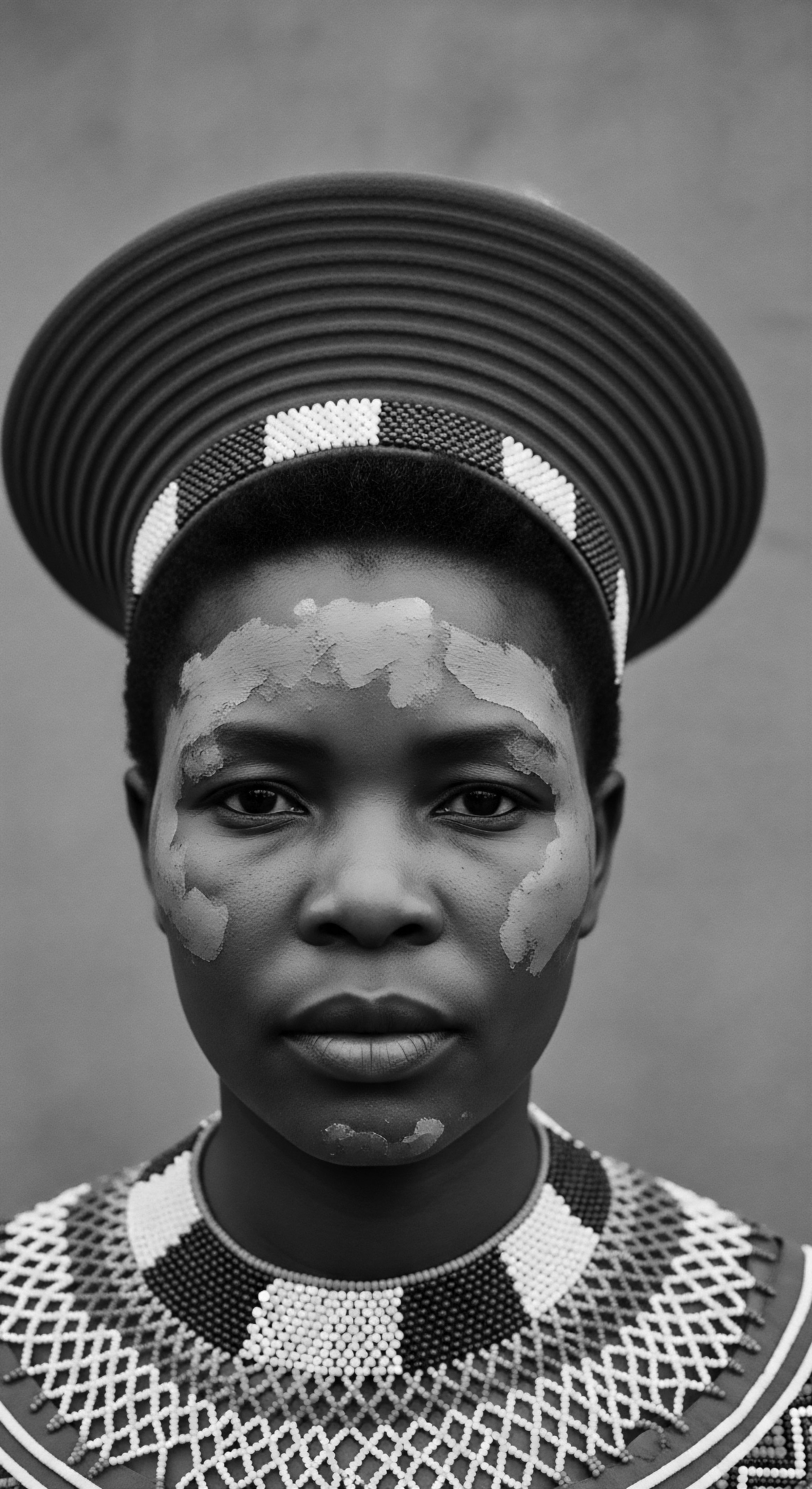
Roots
The essence of hair, particularly textured hair, holds a unique place in the human story, a testament to enduring wisdom passed through generations. When we consider the choices made in hair care today, we are, in a profound sense, reaching back through millennia. Each curl, coil, and wave carries within its structure a whisper of ancient sun, ancestral lands, and resilient communities.
This isn’t a mere cosmetic choice; it is a dialogue with a lineage, a living archive of self and collective identity. Understanding the historical context of textured hair care choices requires delving into the foundational knowledge of hair itself, viewing its very biology through the dual lens of ancient practice and modern science, steeped in a heritage that spans continents and epochs.
From the earliest human settlements, hair served as far more than simple covering. It was a canvas for communication, a marker of belonging, and a conduit for spiritual connection. Ancient African societies, in particular, imbued hair with deep symbolic meaning, reflecting family history, social standing, religious belief, and marital status.
(Omotos, 2018; Afriklens, 2024; Okan Africa Blog, 2020) The practices surrounding hair care were often communal rituals, opportunities for bonding and the transmission of cultural knowledge from elders to younger generations. This historical depth suggests that our current hair care decisions, consciously or not, reverberate with the echoes of these profound ancestral practices.
Modern textured hair choices are a continuation of ancient dialogues between biology, identity, and community wisdom.
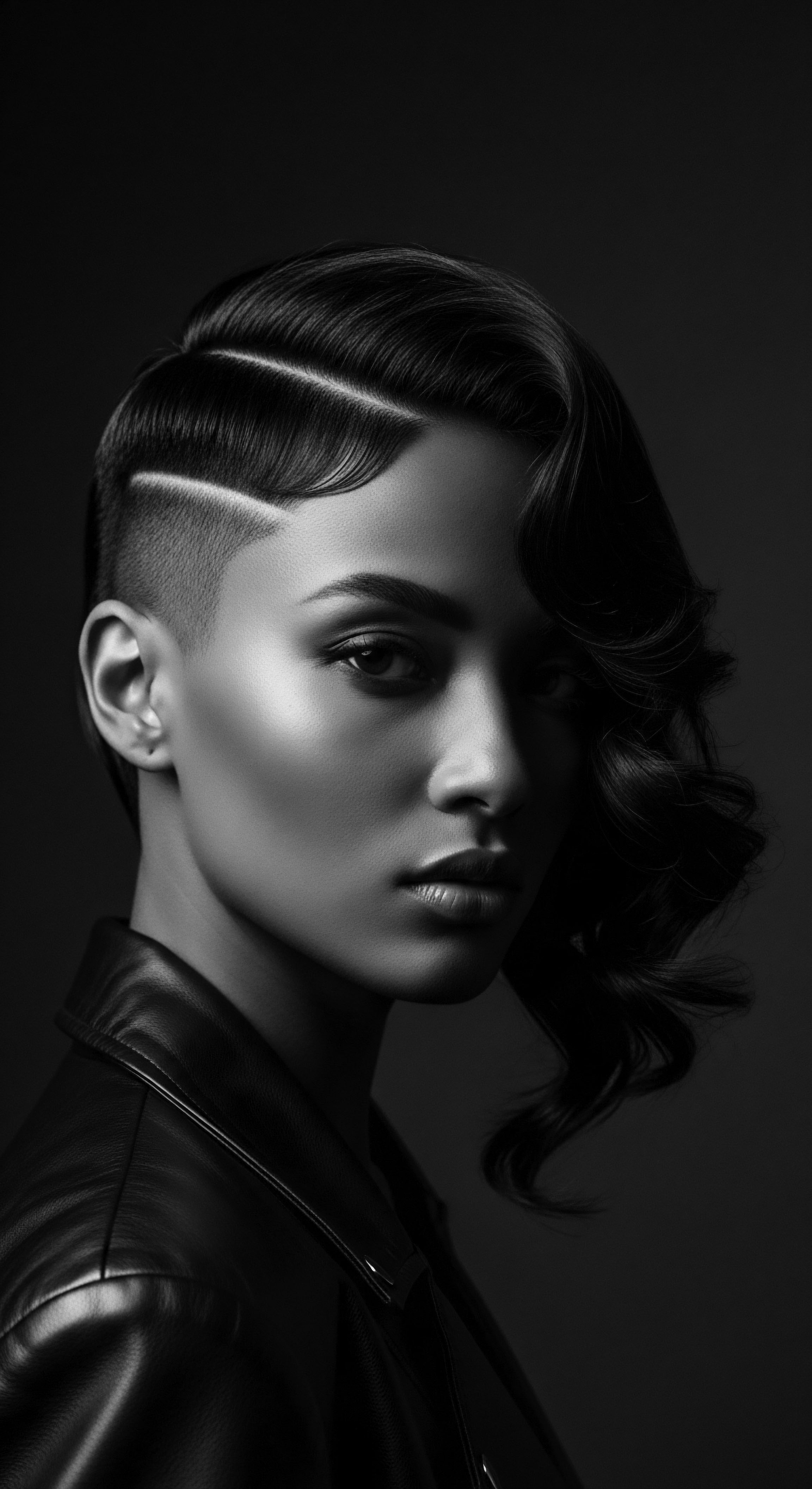
Hair Anatomy and Physiology from an Ancestral View
Textured hair, with its diverse spectrum of curl patterns, from gentle waves to tight coils, developed as a remarkable adaptation to specific environmental conditions. Evolutionary biologists believe that the spiraled structure and denser appearance of afro-textured hair served as a natural shield against intense ultraviolet radiation and helped regulate scalp temperature in early human ancestors residing in hot climates. (Caffrey, 2023) This biological reality, rooted in environmental necessity, informed the earliest care practices. Hair was not something to be tamed, but rather protected and honored for its inherent properties.
Consider the hair follicle itself. In textured hair, the follicle is often asymmetrical and curved, dictating the spiral path of the growing strand. This unique structure, while providing incredible volume and protection, also presents distinct needs regarding moisture retention and susceptibility to breakage if not handled with care. Ancient communities, without the aid of microscopes or molecular biology, intuitively understood these characteristics.
Their methods, passed down through oral traditions and hands-on teaching, sought to preserve the hair’s integrity, recognizing its delicate balance. They observed the hair’s response to various natural emollients and techniques, selecting those that promoted health and minimized damage, often through empirical trial and error over countless generations.
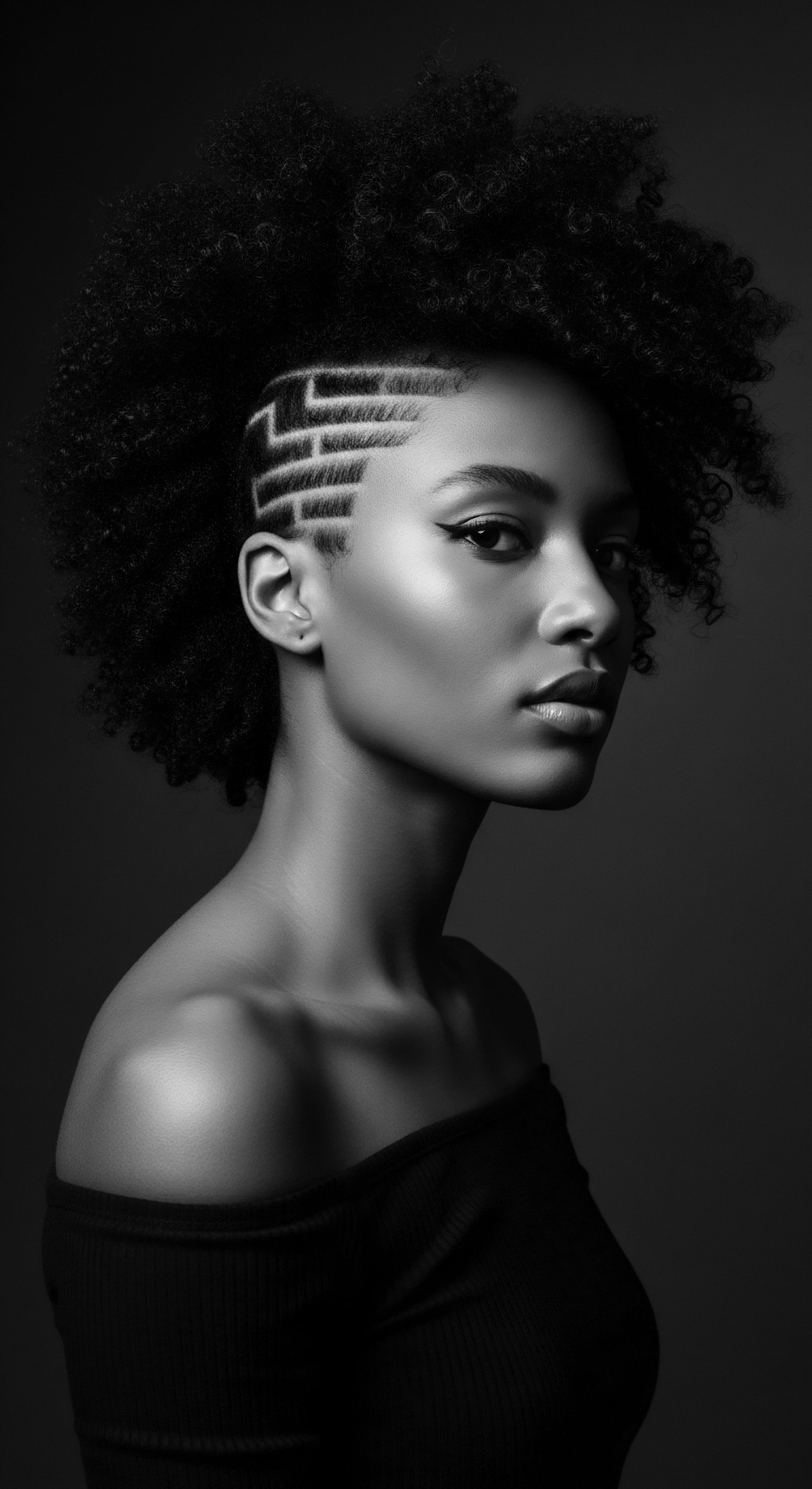
Textured Hair Classification Systems and Their Cultural Origins
The very language we use to classify textured hair today, often employing numerical and alphabetical codes (like 3A, 4C), carries a complex and sometimes troubling history. While contemporary hair typing systems aim to guide product recommendations and styling techniques, their conceptual roots extend to a period when hair texture was used for racial categorization.
- Eugen Fischer’s Hair Gauge ❉ In the early 20th century, a German Nazi ‘scientist’ named Eugen Fischer created a ‘hair gauge’ in 1908. This tool sought to determine individuals’ proximity to whiteness based on hair texture, revealing a discriminatory origin for hair classification. (Donaldson, 2021; Byrdie, 2021)
- The Apartheid Pencil Test ❉ A later, informal system, the Apartheid Pencil Test, maintained that if a pencil could be held in an individual’s hair when shaken, they could not be classified as white. (Donaldson, 2021)
These historical classification methods, designed to uphold racist ideologies and enforce social hierarchies, stand in stark contrast to the indigenous understanding of hair diversity. Within African societies, hair distinctions signified lineage, social role, or age, not a gradient of racial purity. The modern hair typing systems, while seemingly neutral, still echo these problematic origins, prompting many within the textured hair community to critically assess their utility and disconnect from the historical implications.
The shift towards self-classification and appreciation of hair’s vast diversity, rather than rigid categories, marks a conscious effort to reclaim the narrative from these inherited biases. This reclamation acknowledges that hair’s beauty resides not in its conformity to a standard, but in its authentic expression of self and ancestral ties.

The Essential Lexicon of Textured Hair and Growth Cycles
The language of textured hair care today is rich with terms that describe its nuances, many of which find resonance in older traditions. Words like “coily,” “kinky,” “locs,” and “braids” speak to the unique forms hair takes and the methods employed for its care. Yet, the derogatory uses of some terms, such as “nappy,” during the eras of slavery and colonialism, reveal the deliberate attempts to devalue and denigrate Black hair. (Caffrey, 2023; BLAM UK CIC, 2022) The contemporary re-appropriation of such terms transforms them into symbols of pride and defiance.
Understanding hair growth cycles, too, held ancestral relevance. While not articulated in scientific terms, traditional communities understood that hair grew, rested, and shed, and their care practices were aligned with these natural rhythms. The emphasis on gentle manipulation, scalp stimulation, and protective styling often served to support the hair’s natural growth process, minimizing disruption to the delicate cycle.
These long-standing practices often centered on communal care, where the sharing of techniques and wisdom reinforced social bonds and ensured the healthy upkeep of hair, which was deeply tied to individual and collective identity. (Okan Africa Blog, 2020) This communal aspect underscores how hair care was not a solitary activity, but a shared experience that reinforced social cohesion.
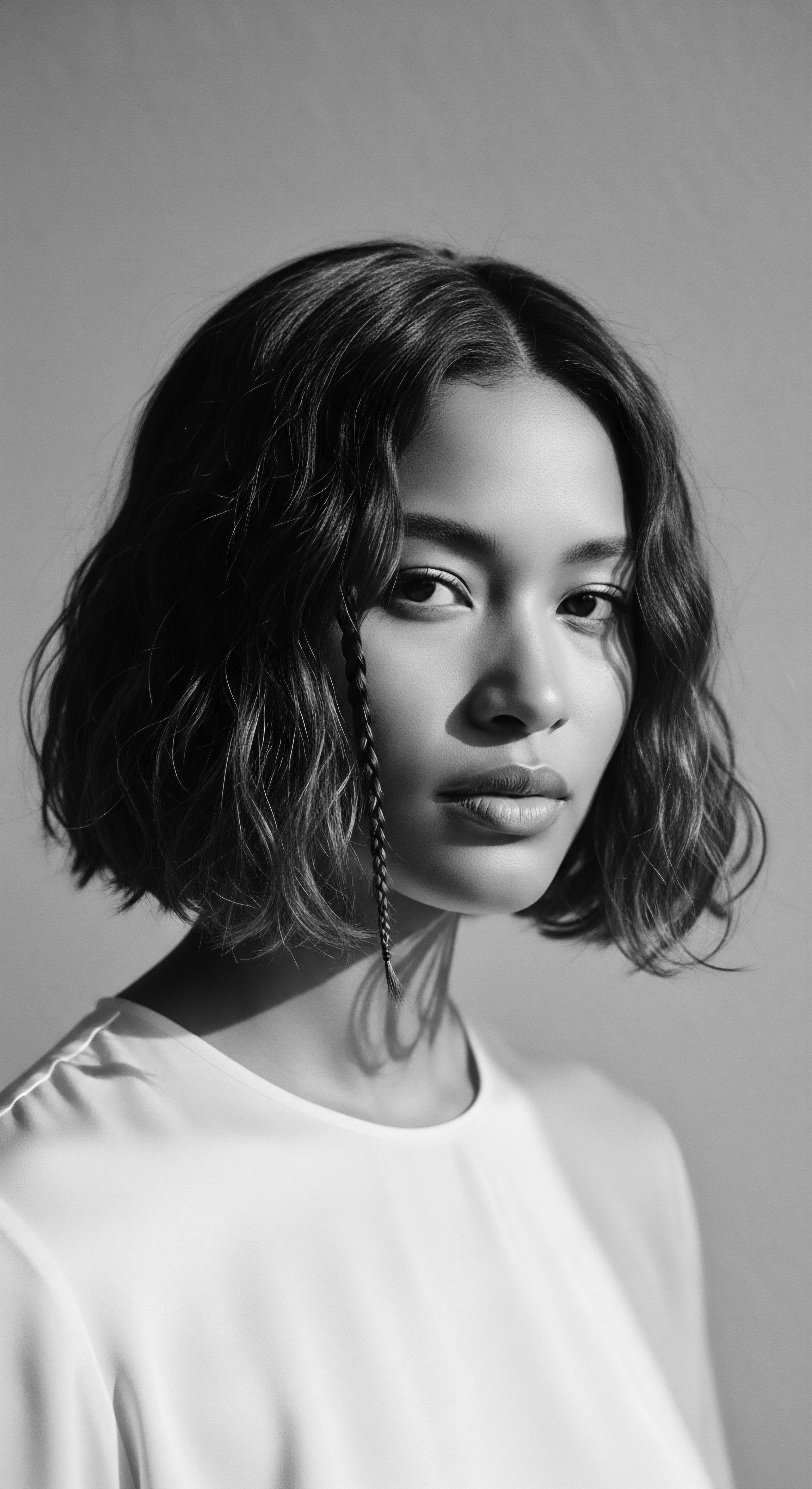
Ritual
The story of textured hair is profoundly told through its styling. From ancient adornments to contemporary expressions, the art and science of shaping coils, curls, and waves have long served as a vibrant language of heritage, identity, and even resistance. Every technique, every tool, carries within it layers of history, speaking to adaptations, innovations, and persistent cultural ties. Understanding the role of historical context in modern textured hair care choices requires exploring how traditional styling rituals have informed and reshaped our present practices, forming a continuous stream from past to present.
In pre-colonial African societies, hairstyles were far from casual. They were intricate maps, signaling a person’s age, marital status, social standing, tribal affiliation, and even spiritual beliefs. (Afriklens, 2024; Okan Africa Blog, 2020) The sheer time and dedication involved in creating these styles often fostered deep community bonds, as women and men spent hours together, sharing stories and wisdom, while hands carefully worked strands into complex patterns.
This communal aspect, a tender thread of connection, shaped the very meaning of hair styling. The aesthetic was deeply functional, offering protection from the elements, as well as signifying identity.
Hair styling traditions are living texts, conveying cultural narratives through shape and adornment.

Protective Styling Lineage
Protective styling, a cornerstone of modern textured hair care, finds its roots firmly planted in ancient African practices. Styles like braids, twists, and locs were not merely decorative; they shielded hair from environmental stressors, reduced breakage, and promoted length retention. The ingenuity of these styles, often requiring hours or even days to create, speaks to a deep ancestral understanding of hair health and preservation.
Consider the humble cornrow, known as “canerows” in some Caribbean regions due to their resemblance to sugarcane fields. (African-American Hair, Wikipedia) These flat, scalp-hugging braids served multiple purposes. In parts of Africa, specific patterns identified tribal membership or marital status. During the transatlantic slave trade, their significance evolved dramatically.
Enslaved Africans ingeniously used cornrows to conceal rice seeds, ensuring survival and carrying a piece of their homeland’s heritage to new, brutal geographies. (BLAM UK CIC, 2022) Beyond sustenance, cornrow patterns reportedly served as literal maps, guiding escape routes to freedom. (BLAM UK CIC, 2022; African-American Hair, Wikipedia) This historical example powerfully illuminates how a hair styling choice became a tool of resilience and a silent act of rebellion, a testament to profound human spirit.
Today, when individuals select cornrows or box braids, they are not only choosing a practical, low-manipulation style; they are also consciously or unconsciously participating in a continuum of heritage. They honor the ingenuity of ancestors who transformed symbols of identity into instruments of survival, a cultural legacy extending through generations.
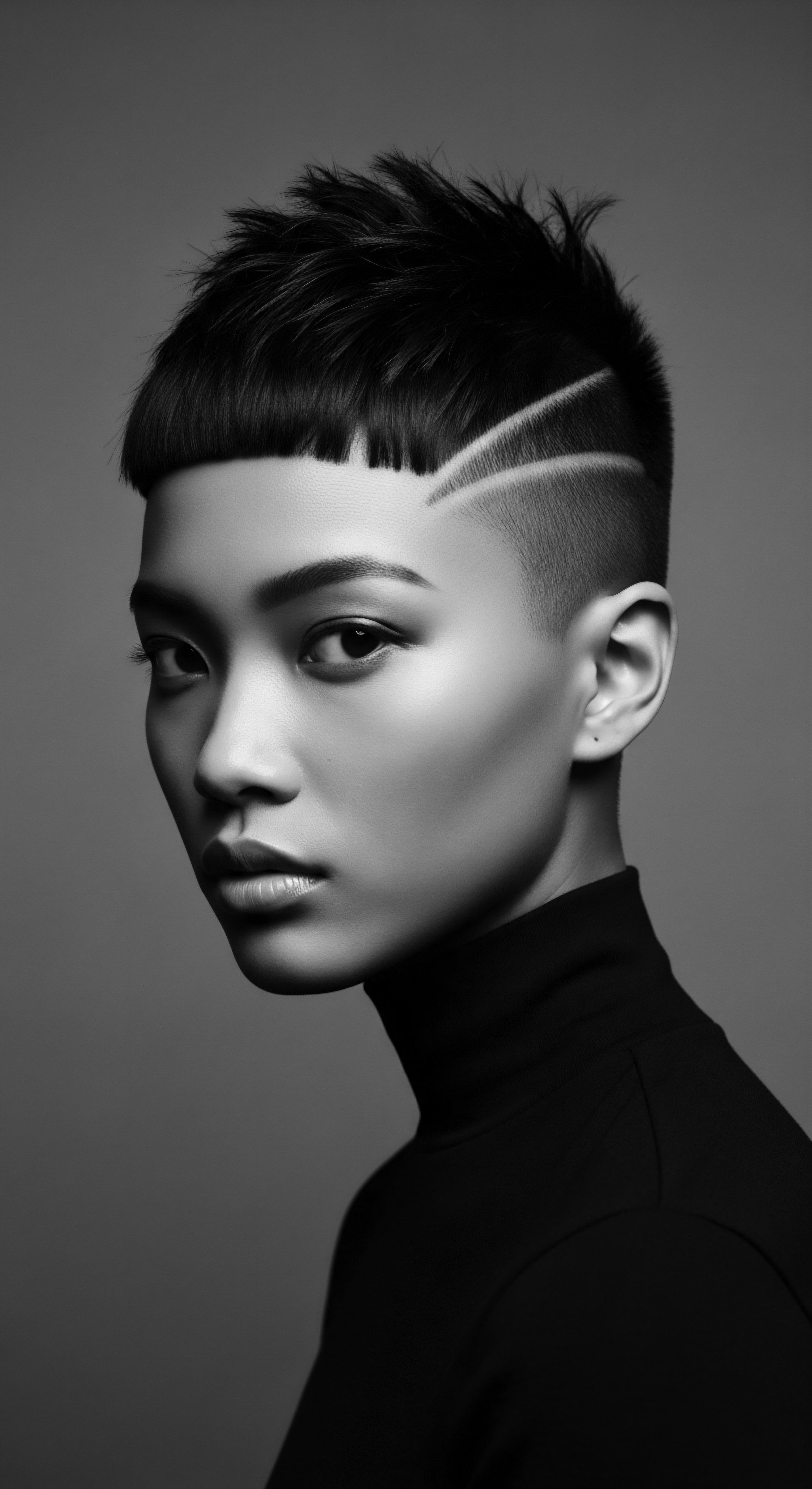
Head Coverings and Resistance ❉ The Tignon Laws
The story of head coverings also forms a compelling part of this stylistic heritage. While headwraps were common in many African societies for protection and adornment, their usage took on a new, loaded meaning in the diaspora. In 1786, Spanish colonial Louisiana enacted the Tignon Laws, a set of sumptuary laws requiring free Black women to cover their hair with a tignon or kerchief.
(New York Historical, 2024; Royal Tours, 2016; reframe52, 2024) This legislative act aimed to strip these women of their perceived social mobility and distinguish them from white women, forcing a visible marker of their supposed inferior status. (New York Historical, 2024; Royal Tours, 2016; reframe52, 2024)
However, the women of New Orleans responded with extraordinary creativity. They adorned their mandated tignons with vibrant, expensive fabrics, jewels, feathers, and elaborate knots. (New York Historical, 2024; Royal Tours, 2016) What was intended as a badge of subjugation became a statement of defiance, beauty, and wealth, a subtle rebellion that reshaped the very symbol of oppression into one of enduring style and cultural pride.
(New York Historical, 2024; reframe52, 2024) This historical instance underscores how hair practices, even under duress, remained a powerful medium for self-expression and cultural continuity. Modern headwrap styles, therefore, carry this powerful historical resonance, connecting wearers to a legacy of inventive resistance.

Traditional Tools and Their Enduring Presence
The tools used for textured hair care also carry a rich history. Before manufactured combs and brushes, ancient communities crafted implements from natural materials, such as wood, bone, and natural fibers. These tools were designed to gently detangle, section, and style hair without causing damage, reflecting an understanding of its unique needs.
| Historical Tool Wooden Combs |
| Description and Ancestral Use Carved from local woods, used for gentle detangling and creating partings; often adorned with symbolic carvings. |
| Modern Parallel or Influence Wide-tooth combs and wooden combs remain preferred for detangling textured hair wet or dry, minimizing breakage. |
| Historical Tool Hair Picks/Needles |
| Description and Ancestral Use Used for intricate sectioning, styling, and adding height to coily styles; some were ceremonial. |
| Modern Parallel or Influence Afro picks are common today, used to lift hair from the scalp and add volume without disturbing curl patterns. |
| Historical Tool Natural Fibers |
| Description and Ancestral Use Fibers or threads from plants used for wrapping, threading, and creating elongated styles like "Irun Kiko" in Yoruba culture. |
| Modern Parallel or Influence Hair thread and extensions made from synthetic or natural fibers are used for modern protective styles, drawing a direct line to ancestral methods. |
| Historical Tool The selection of tools, past and present, reflects a persistent commitment to respecting and working with the natural qualities of textured hair. |
Even practices that emerged later, like the hot comb, first invented in the 1880s, entered the narrative of textured hair. While some adopted these tools to conform to Eurocentric beauty standards, seeking straighter hair for social and economic advantages, the desire for sleekness itself was sometimes an adaptation, a survival strategy in a society that often penalized natural Black hair. (Odele Beauty, 2021; Library of Congress, n.d.) The evolution of these tools, from rudimentary forms to more sophisticated versions, speaks to an ongoing quest for versatile styling, influenced by prevailing social ideals and cultural expectations.

Natural Styling Techniques and Ancestral Definition
Modern natural styling methods, such as wash-and-gos, twist-outs, and braid-outs, are contemporary interpretations of techniques that have existed for centuries. The desire to define and celebrate the natural curl pattern is deeply rooted. In various African cultures, styles that enhanced the hair’s inherent texture were common, often achieved through specific braiding, twisting, or wrapping techniques before unraveling.
These practices created intentional patterns that celebrated the hair’s natural form. (Noireônaturel, 2024)
The meticulous process of preparing hair, applying natural emollients, and carefully setting patterns has a direct lineage to ancestral methods that understood the science of moisture, tension, and curl formation long before scientific terms existed. When we see a defined twist-out today, we can recognize the echo of an ancient hand, patiently constructing a style that honored the hair’s innate beauty and function. This continuity reinforces how modern styling choices are not merely trends, but deeply connected to a heritage of working with, rather than against, the hair’s natural inclination.

Relay
The journey of textured hair care stretches beyond mere styling; it speaks to a deep, holistic regimen of tending to the self, a practice informed by ancestral wisdom and continually refined by contemporary understanding. The choices individuals make in caring for their textured hair today are not isolated acts; they are relays of intergenerational knowledge, adaptations to changing environments, and expressions of cultural sovereignty. This aspect of care, from daily rituals to problem-solving approaches, reveals how historical context provides a profound foundation for modern textured hair care choices. It is a testament to persistent ingenuity and a deep connection to well-being.
Ancestral communities understood that healthy hair was a reflection of overall vitality. Their care regimens were integrated into daily life, often communal, and deeply connected to their environment. Ingredients were sourced locally, practices were passed down through familial lines, and the act of caring for hair was itself a form of social engagement and a conduit for cultural transmission. This holistic view, where hair health was interwoven with communal health and spiritual practice, continues to influence modern approaches.
Ancestral care regimens offer a powerful blueprint for modern textured hair health and cultural connection.

Building Personalized Regimens ❉ Wisdom and Science
The modern call for personalized hair regimens, tailoring products and practices to individual hair needs, finds a parallel in the adaptive wisdom of past generations. African communities, spanning diverse climates and possessing varied hair textures, developed nuanced approaches to care. They learned, through sustained observation, which local plants, oils, and techniques best served their hair.
For instance, the Basara Arab women of Chad have, for centuries, maintained exceptionally long, strong hair using Chebe Powder. (SEVICH, 2024; Elsie Organics, 2022) This natural mixture of seeds, cloves, and aromatic resins is traditionally blended with oils and applied as a paste, left on the hair to reduce breakage and retain moisture, allowing for significant length retention. (SEVICH, 2024; Elsie Organics, 2022; Chebeauty, 2023) The women credit this ritual, which involves communal application and deep care, as their secret to healthy hair. (SEVICH, 2024; Chebeauty, 2023) This case study shows a specific, rigorously backed historical example ❉ Chebe powder is not merely a product; it represents a centuries-old, community-based practice that prioritizes length retention and protection against harsh environmental conditions, providing a direct link between ancestral practices and modern hair care goals.
Modern scientific understanding validates many of these traditional principles. For example, Chebe powder’s high protein content helps strengthen hair strands, while its use with oils helps seal in moisture, directly addressing common needs for textured hair. (Chebeauty, 2023; Assendelft, 2024) This connection reveals that ancestral wisdom was often a form of applied science, empirically refined over time, and its principles remain relevant. Today’s hair care formulators often seek inspiration from such time-tested remedies, integrating these heritage ingredients into contemporary products, thus bridging ancient knowledge with modern biochemical understanding.

The Nighttime Sanctuary ❉ Bonnet Wisdom
The practice of protecting hair at night, often with bonnets, scarves, or headwraps, is a ritual deeply rooted in the practical wisdom of textured hair care. While specific terms like “bonnet” are more recent, the underlying principle of preserving styled hair and minimizing friction against rough surfaces dates back centuries.
In many African and diasporic communities, hair was a sacred entity, demanding meticulous care. Sleeping directly on abrasive surfaces could disrupt intricate styles, cause tangles, and lead to breakage. Therefore, various forms of head coverings were employed to protect hair while sleeping, or even during daily labor to keep hair clean and contained. This practice reflects a practical solution to hair maintenance, ensuring styles lasted longer and hair remained healthier.
The shift from necessity to a cultural norm has solidified the bonnet as a symbol of textured hair care, passed down through matriarchal lines as fundamental wisdom. Modern satin or silk bonnets are direct descendants of these historical practices, serving the same protective purpose, updated with materials that minimize friction and preserve moisture.
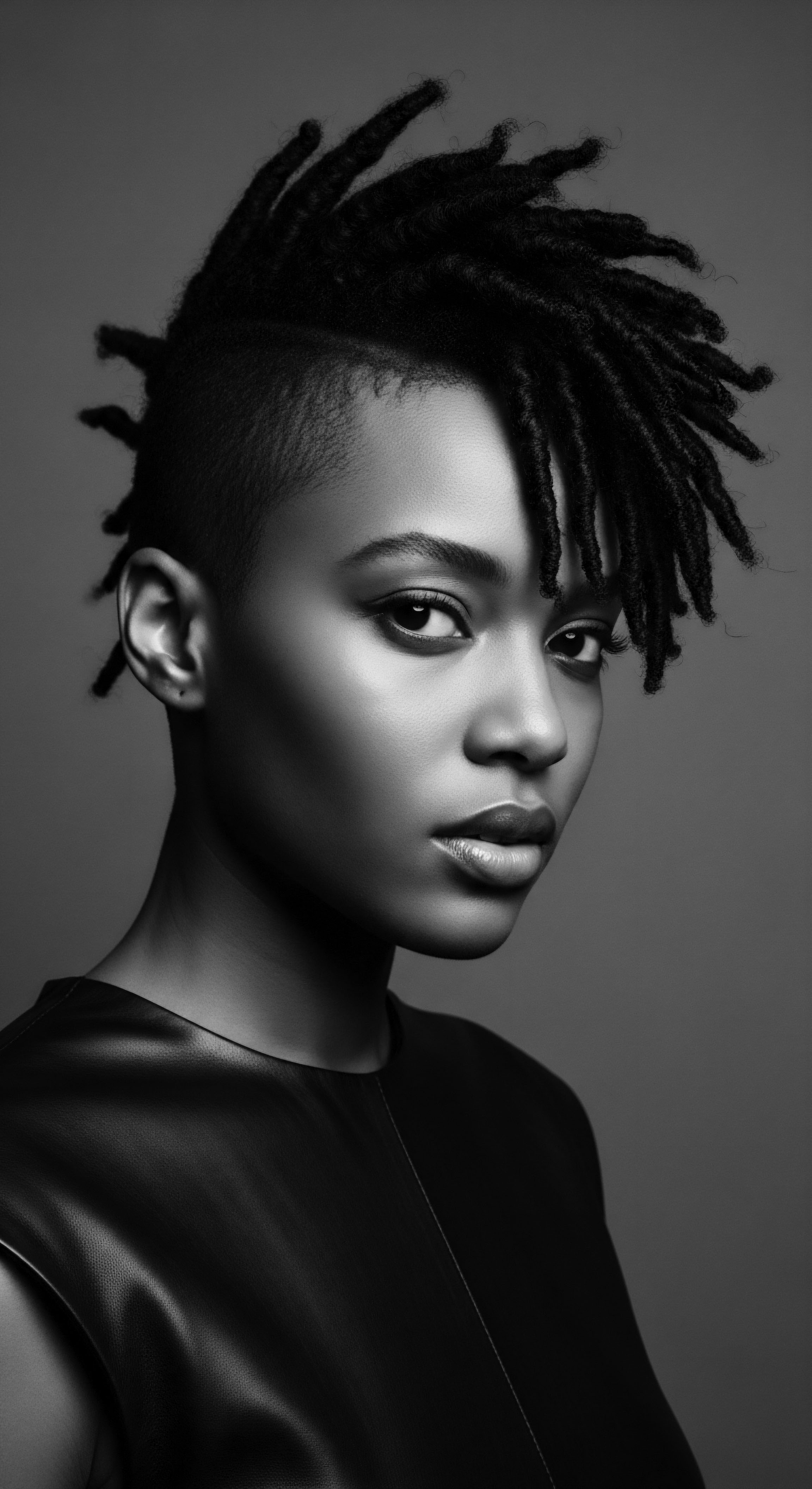
Ingredient Deep Dives for Textured Hair Needs
The pantry of traditional textured hair care was the natural environment itself. Ingredients harvested from local flora were the primary components of ancestral hair health regimens. These ingredients, selected for their observed effects on hair and scalp, now find themselves re-evaluated and integrated into global beauty markets, their efficacy often validated by modern research.
- Shea Butter ❉ Derived from the nut of the African shea tree, shea butter has been used for millennia across West Africa for skin and hair protection against harsh climates. (Beiersdorf, 2025; Ciafe, 2023; Better Shea Butter & Skin Foods, n.d.) It is a rich emollient, celebrated for its moisturizing and healing properties, applied to newborns, and used in wedding and funerary rituals, making it a truly embedded cultural substance. (Beiersdorf, 2025; Ciafe, 2023)
- Coconut Oil ❉ Though globally used, coconut oil holds historical significance in many tropical regions, including parts of Africa and the Caribbean, for its penetrating moisturizing properties and ability to reduce protein loss.
- African Black Soap ❉ Originating from West Africa, often made from plantain skins, cocoa pods, and shea tree bark, this cleansing agent was used for hair and body, known for its purifying yet gentle action.
The continued presence of these ingredients in contemporary textured hair products speaks volumes. Their historical use provides a powerful testament to their efficacy, suggesting a deep, inherited knowledge of botanical properties. Modern science now dissects the fatty acid profiles of shea butter or the molecular structure of coconut oil to explain what ancestors knew intuitively ❉ these natural substances truly nourish and protect textured hair. The demand for “clean” and “natural” ingredients in modern beauty often circles back to these ancestral wellsprings, demonstrating a cyclical return to heritage-informed practices.

Holistic Influences on Hair Health
Beyond products and techniques, the holistic view of hair health, deeply embedded in ancestral wellness philosophies, guides many modern choices. In traditional African societies, hair was regarded as the most elevated part of the body, a spiritual antenna that connected individuals to the divine and to their ancestors. (Afriklens, 2024; Okan Africa Blog, 2020) This spiritual reverence meant hair care was not separate from overall well-being.
A clean, neat, and well-maintained head of hair was often a sign of good health, social standing, and spiritual alignment. Neglected hair could signify mourning, illness, or even insanity in some communities. (Okan Africa Blog, 2020) This integrated perspective means that modern textured hair care choices are sometimes also influenced by a broader understanding of self-care as a spiritual or mental practice.
The deliberate act of caring for one’s hair, of taking the time for rituals, can be a grounding experience, a way to connect with a sense of inner peace and ancestral lineage. The renewed focus on mindful routines, on nourishing the scalp as much as the strands, and on understanding the body’s internal workings as they relate to hair health, all echo these timeless, holistic philosophies.

Reflection
Our exploration of textured hair care, from the very composition of its strands to the most intimate rituals of its tending, consistently points to one enduring truth ❉ historical context is not a dusty artifact, but a living, breathing current flowing through our modern choices. The heritage of textured hair, particularly for Black and mixed-race communities, is a story of resilience, creativity, and a profound connection to self and lineage. It is a narrative woven through biology, cultural practices, and acts of profound resistance.
Every product chosen, every style adopted, holds a whisper of ancient African wisdom, the echoes of ingenuity during enslavement, and the defiant declaration of identity in the face of oppression. The seemingly simple act of caring for textured hair becomes a vibrant act of remembrance, a participation in a continuous dialogue with those who came before. It is a quiet, powerful affirmation of an unbreakable spirit and an enduring beauty that has weathered centuries of challenge.
Roothea’s ‘Soul of a Strand’ ethos recognizes this deep truth. We understand that the future of textured hair care lies not in forgetting the past, but in drawing strength and wisdom from its well. It invites us to honor the communal hands that first braided hair into symbolic forms, the ancestral knowledge that recognized the healing touch of natural ingredients, and the unbreakable spirit that transformed forced coverings into statements of unyielding grace. Each choice, then, is a brushstroke on a continuing canvas, adding richness to a heritage that grows stronger with every generation.

References
- Afriklens. (2024, November 1). African Hairstyles ❉ Cultural Significance and Legacy.
- African-American Hair. (n.d.). Wikipedia.
- Assendelft. (n.d.). Unlocking the Secrets of Chebe Powder from Chad ❉ Benefits and Uses.
- Beiersdorf. (2025). Shea Butter – Natural Care from West Africa.
- Better Shea Butter & Skin Foods. (n.d.). Why Shea Butter ❉ History & Benefits.
- BLAM UK CIC. (2022, September 15). The History of Black Hair.
- Caffrey, C. (2023). Afro-textured hair. EBSCO Research Starters.
- Chebeauty. (2023, September 20). Chebe Powder Chronicles ❉ Transforming Hair Care Traditions.
- Ciafe. (2023, January 31). Shea Butter – Explainer.
- Donaldson, S. (Host). (2021, October 25). The Controversial History of the Hair Typing System (Crowned). Byrdie.
- Elsie Organics. (2022, February 25). Chebe Powder ❉ Everything You Need to Know.
- Library of Congress. (n.d.). Heavy is the Head ❉ Evolution of African Hair in America from the 17th c. to the 20th c.
- New York Historical. (n.d.). Fashionable Rebellion – Women & the American Story.
- Noireônaturel. (2024, January 2). African braids ❉ a timeless heritage of beauty and cultural significance.
- Odele Beauty. (2021, February 22). 6 Things Everyone Should Know About Black Hair History.
- Okan Africa Blog. (2020, October 8). The significance of hair in African culture.
- Omotos, A. (2018). (Paper presented in Journal of Pan African Studies). The Gale Review.
- reframe52. (2024, February 8). Tignon Laws & Black Women’s Creative Resistance.
- Royal Tours. (2016, October 11). The Tignon Law of Louisiana.
- SEVICH. (n.d.). The Cultural Background and History of Chebe Powder.
